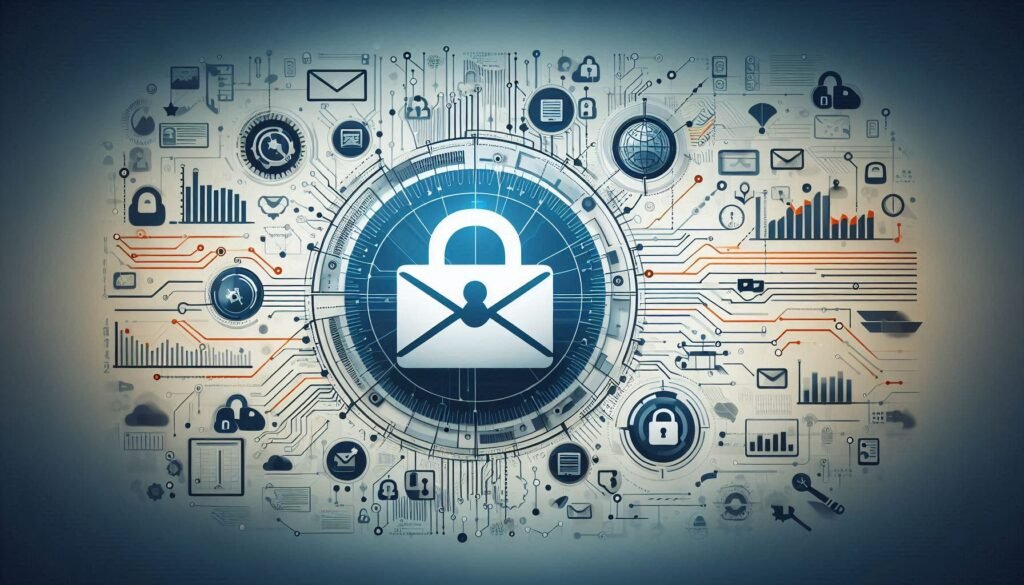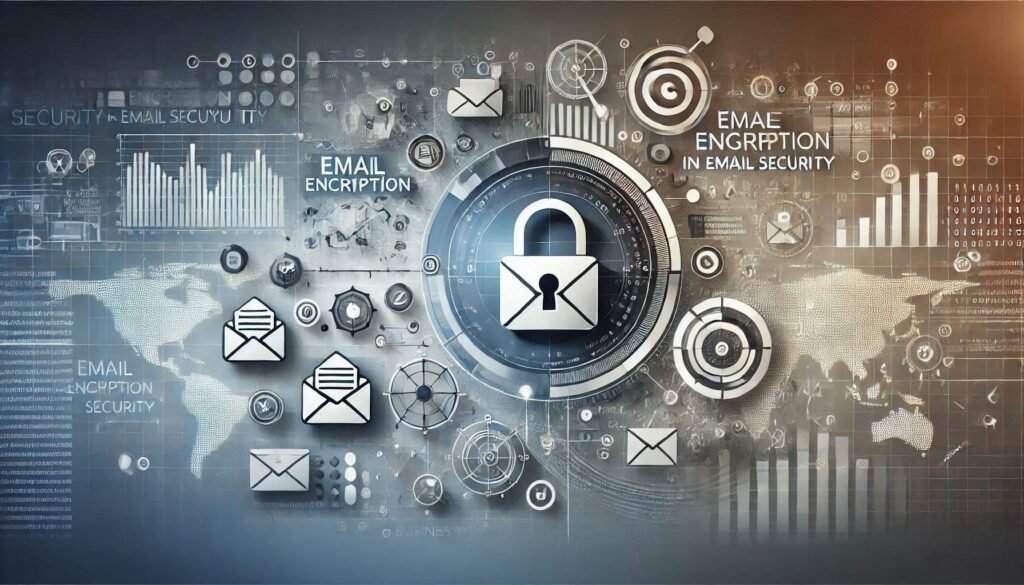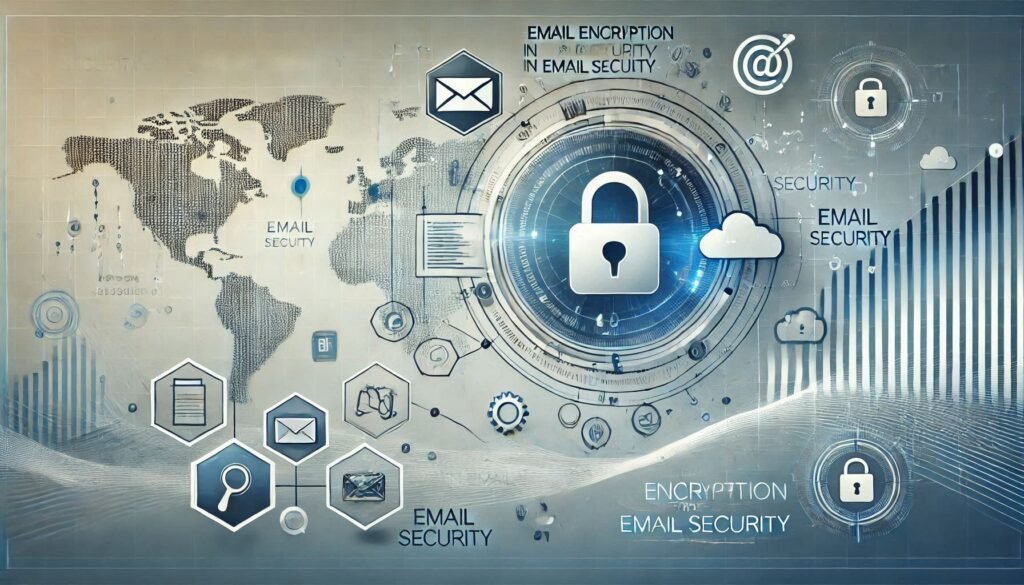A Pillar of Modern Email Security
Executive Summary
Email is one of the main channels of organizational communication at all levels of an organization in today’s globalized world. But the convenience and efficiency of email has built-in security risks in it. Therefore, cybercriminals are making it a point to come up with innovative ways of intercepting, stealing, and exploiting information of their victims shared through emails. It requires proper security protocols, and email encryption is a key element in reducing these potential threats. Email security is an important part of information security in the cybersecurity spectrum that aims to prevent sensitive information from being stolen or compromised by unauthorized entities through email. In this whitepaper, we will explore the importance of email encryption, some of the trends in the market, and then provide some guidance for organizations looking to improve their email security posture.
Importance of Email Encryption
String encryption for emails is most significant for protecting sensitive data from cyber threats like phishing attacks, malware, and man-in-middle attacks. To maintain confidentiality, integrity, and authenticity of email communications, encryption prevents unauthorized individuals from being able to read email content. In sensitive sectors like healthcare, finance, and government, this is especially important. In respect to regulatory adherence, prevention of financial theft and reputational damages and the development of trust among all stakeholders, robust email encryption solutions yield positive results.

Market Trends
- Positive Trends:
- Enhanced awareness of email security threats and the significance of data protection
- Increasing deployment of cloud-based email security solutions with scalability and flexibility
- AI will detect more threats and respond automatically, resulting in an increase of AI-powered email security tools
- Regulations in data compliance and protection foster encryption adoption
- Adverse Trends:
- More sophisticated phishing and malware attacks that prey on human weaknesses
- Expansion of the attack surface of bring your own device (BYOD)
- Budgetary limitations preventing scaling to enterprise security solutions
- Scarcity of skilled cybersecurity resources to deploy and manage email security
Market Segmentation
| Segment | Sub-segment | Description |
| Deployment Model | Cloud, On-premises, Hybrid | Deployment location of email security solutions, catering to different organizational needs and preferences |
| Organization Size | Small and Medium Enterprises (SMEs), Large Enterprises | Categorization based on the size of the organization, recognizing the diverse requirements and resources of different-sized businesses |
| Industry Vertical | Healthcare, BFSI, Government, IT & Telecom, Retail, Manufacturing, Others | Industry sectors utilizing email security solutions, highlighting the specific security and compliance needs of different verticals |
| Solution | Email Encryption, Spam Filtering, Anti-malware, Data Loss Prevention (DLP), Archiving & Retention | Specific functionalities within email security solutions, addressing various aspects of email security such as data protection, threat prevention, compliance, and data management |
Key Statistics
- Email is pivotal in the realm of cybercrime; according to this study by Verizon, 96% of malware is distributed through email, so focusing on email security is crucial to prevent cybercrime.
- According to the FBI’s Internet Crime Complaint Center (IC3), Business Email Compromise (BEC) scams have led to over $43 billion in global losses between June 2016 and December 2021, highlighting the financial consequences of email threats.
- This highlights the need of email security as Gartner estimates that by 2025, 60% of enterprises will adopt a holistic email security solution.

Future Outlook
Email security will see further integration of AI and machine learning for advanced threat detection and automated response in the next 5 years. Zero-trust security models will become more advanced, where every access point that allows a user to access the system will need to be verified — irrespective of where the user is physically located or what device they are using. Secure access to email and web content will remain a priority, but users are increasingly demanding cloud-based solutions that can be delivered on any device and any platform. More user-friendly and robust email encryption solutions, possibly with blockchain to provide more security for transmission and key management, will become active in 2023.
We are really interested in customer reviews and we want to extract only those lines from the data that contain customer reviews.
Problem: Phishing attacks are one of the major concerns : Attackers are still using social engineering techniques based on human psychology to make users fall into the trap of giving away their sensitive data or downloading malware. Such attacks can result in data breaches, financial losses, and damage to the reputation of the company.
Solution: A multi-layered approach that contains:
- Email filtering and anti spams solutions: Helps block malicious emails from reaching to user’s inbox
- Security awareness training: To train employees on phishing techniques and how to secure sensitive emails.
- Multi-factor authentication: To protect email accounts from unauthorized access, even if credentials are obtained.
- Email Encryption: To secure sensitive information when communicated via email, making it illegible to any one apart from authorized personnel.
Data: What Joyner and his team decided was that phishing attacks continue to be a top source of the causes for data breaches, according to studies issued by organizations such as Proofpoint, and therefore, they needed something that integrated both technology and user training as part of any solution.
Competitive Landscape
After that, the time is spent on the quantity of data used, the number of users, the volume of documents, and so on.
Key Products/Solutions:
- Microsoft 365 Defender
- Cisco Secure Email
- Proofpoint Email Protection
- Mimecast Email Security
Competitive Strategies:
- The emphasis around threat detection and automated response with AI and machine learning
- Integration with other security solutions for a holistic security strategy
- Next-gen data solutions that can shift data across on-premises and cloud Rationally priced cloud- based offerings catering to multiple use cases
Key News:
- Which has seen recent acquisitions and mergers within the industry consolidating expertise and market share
- Enhancements surrounding functionality and responsiveness to new threats
- This is a brand new capability supported by partnership/collaboration, expansion of capabilities/market.
Innovation in Email Security
Homomorphic cryptography is a recent advancement in email encryption that enables computations to be done on encrypted data without decryption. To mitigate a future attack on current encryption by quantum computing, quantum-resistant algorithms are being investigated. In addition, the constantly evolving field of email encryption is giving rise to more user-friendly solutions—those that make it easier for organizations to deploy and manage email encryption.

Analyst Recommendations
- Regularly perform risk assessments to find weaknesses and make a plan to secure them.
- Use a mail security systems with encryption high recommends
- Implement strong password usage and two-factor authentication to ward off unauthorized access.
- Conduct regular security awareness training for employees to nurture a security-minded culture.
This knowledge will help you in your security strategies to monitor emerging threats and best practices to bear and continue adapting them to your security strategies.
Summary
In the digital landscape of today, securing emails is of utmost importance and email encryption is one of the cornerstones of a strong email security strategy. Organizations need to proactively identify the ever-evolving threat landscape through comprehensive solutions, employee education, and the latest trends and best practices.
How does email encryption fit into your overall cybersecurity strategy?






